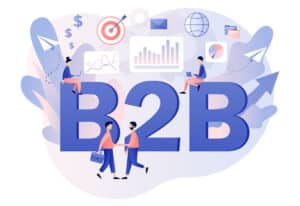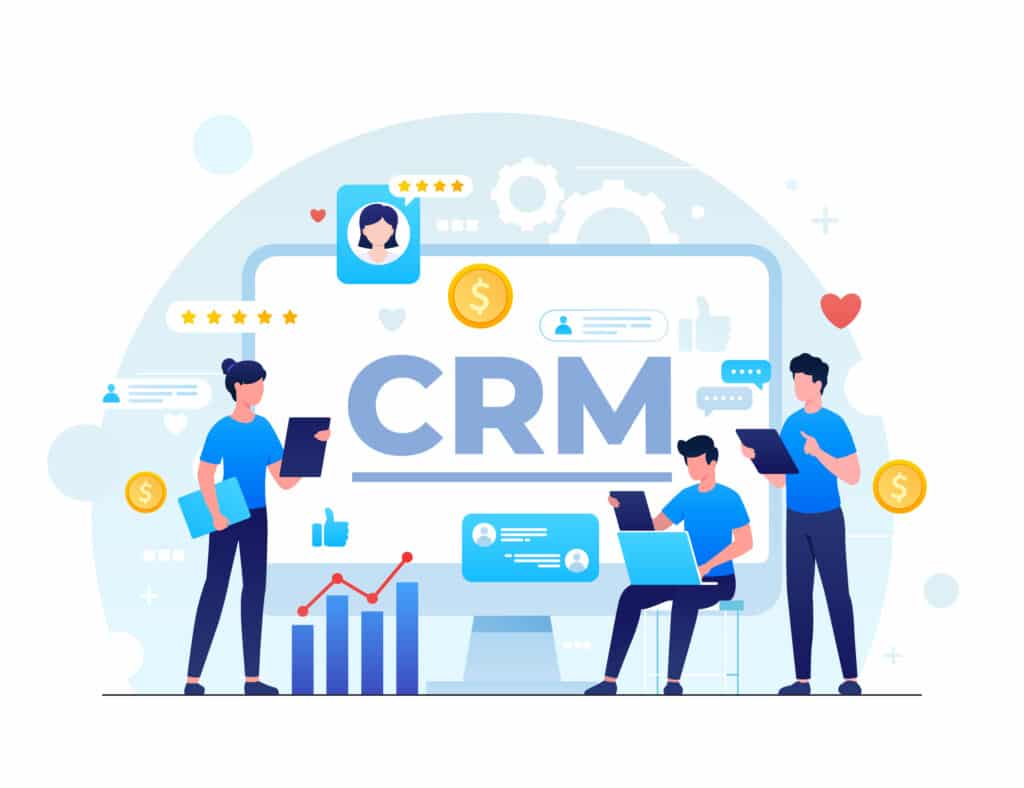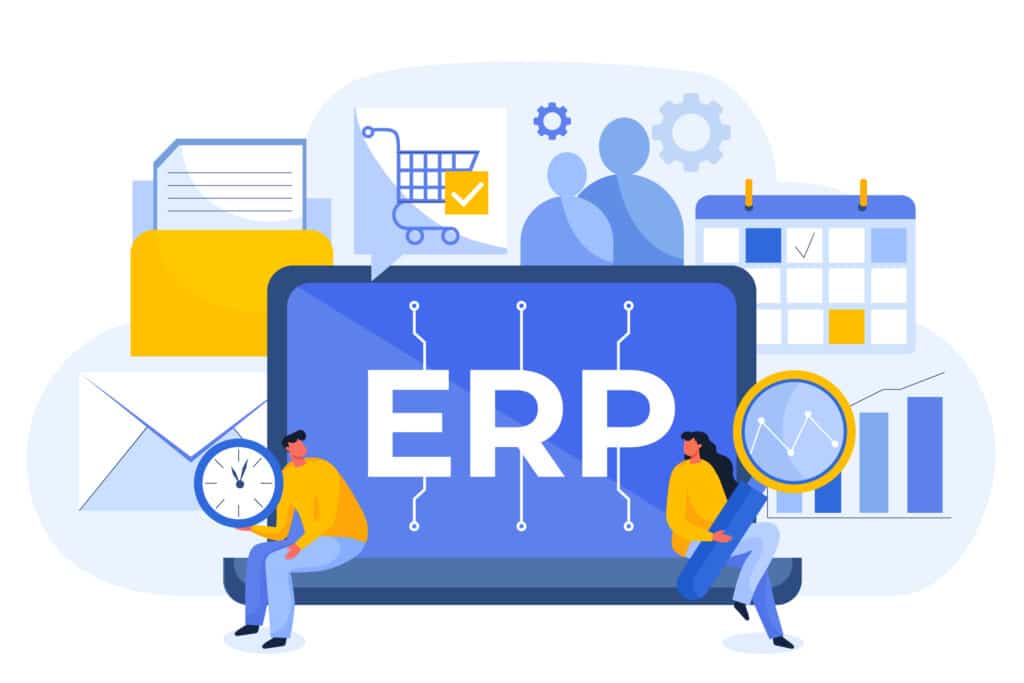Businesses are always looking for new ways to grow and opportunities to reach untapped markets. B2B digital marketing offers a range of powerful tactics and channels that can help to achieve your growth objectives. The implementation, and careful planning of a detailed b2b digital marketing strategy is an essential first step in the process.
In this article we will discuss the fundamentals and benefits of b2b digital marketing, different types of targeting, b2b marketing channels, and the b2b marketing sales cycle.
Unique aspects of b2b digital marketing
The goal of b2b digital marketing is to reach other businesses rather than individual customers through a variety of digital marketing tactics and channels. B2B digital marketing strategies are very effective for businesses trying to promote their products and services to other businesses by building a relationship with them. The products and services are then positioned to potential new business at the right time and place, when they are needed most.
The expansive reach of the internet allows businesses to use these tactics to increase their visibility and brand awareness in a much more cost-effective manner than traditional marketing methods.
Implementing a strong digital marketing plan, either within your company or with the help of a digital marketing agency, provides businesses with measurable results and information as to who is engaging with their campaigns, and ultimately where leads and sales are coming from.
Types of b2b targeting and audiences
- Demographic targeting:One of the most effective methods of reaching a desired audience involves targeting specific groups based on key demographic information such as; job title, industry, location, company size etc. This method is known as demographic targeting, and platforms such as LinkedIn have changed the game for businesses whose goal is to connect, promote products and services, generate leads, and sell to other companies by targeting industry professionals with decision making power.
- Contextual targeting:Contextual targeting reaches audiences based on the type of content they are consuming; articles and topics they research and read about, keywords they search for, and videos they tend to watch. Similarly, behavioral targeting involves watching the actions and behaviors of an audience more closely, and targeting them based on products and services they are actively researching. Monitoring signals, such as browsing history, increases the likelihood that a purchase will be made for specific products and services.
- Re-targeting:Re-targeting takes previous actions and interactions of an audience (visiting a website, clicking on an ad, filling out a form) and targets that business directly through ads or offers.
- Account Based Marketing(ABM):Account based targeting involves targeting new businesses or accounts that are an ideal audience for personalized marketing campaigns promoting the products and services you are selling.
Lead nurturing & relationship building
An important piece that cannot be overlooked when implementing your b2b digital marketing strategy is the trusted relationship you must first foster with potential companies and industry professionals before expecting them to invest in your products and services. In a world driven by technology, human connection is still the foundation of any strong relationship, and it goes a long way. Start by answering questions and engaging through social media, run awareness campaigns to see who you are reaching, and create content that strengthens your brand and supports your image. Identifying and understanding your target audience by getting to know their pain points, behaviors, and common challenges will allow you to then tailor your digital marketing plan to speak directly to them. B2B marketing often requires a little more TLC, with a focus on trust and relationships than B2C marketing, since there are typically more decision makers involved, the cost is higher, and possibly more steps are required before the final sale. Remember, there is a lot more at risk for a business owner/decision maker looking to make the best impact on fellow employees and stakeholders within their company, than a single consumer making a personal purchase. Responding to leads and implementing a plan to follow up after the initial contact is imperative in the success of your campaigns.
Understanding The b2b Marketing Sales Cycle
As mentioned earlier, the typical b2b marketing sales process may require more attention and relationship nurturing than selling directly to the consumer.
Your business must first identify the ideal target and get to know the type of businesses/companies you wish to sell to. Once that has been established you must dedicate a period of time to truly understanding and getting to know the details of these companies – identifying their pain points, challenges, and knowing what makes them unique.
You can begin to build a relationship with your target audience by engaging through social media outlets and running awareness campaigns. These types of campaigns are relatively inexpensive and quite successful in pinpointing the mood of your audience.
Painted Robot – Case Study
As an example of how to implement the above strategies, we will take a look at a client that experienced exponential growth in their asphalt business through b2b digital marketing. Our initial first step was to understand the asphalt business, the challenges they needed to overcome and their goals as a company.
We then identified their ideal target and got to the root of their pain points as decision makers in the asphalt industry and the problems we were able to solve for them.
Demographic targeting on LinkedIn allowed us to find specific groups and users by job title, location and the companies they worked for, giving us the opportunity to present them with our value proposition and generate many new leads. This approach allowed our client to reach an audience that was nearly untouchable using other outbound marketing strategies.
We were then able to take these leads and use a lookalike targeting strategy to target users and companies with similar characteristics, behaviors and needs based on the analysis of these new customers. Feedback from this campaign also allowed us to define new audiences for the client, as well as understand the style of messaging that resonates best with the intended audience.
Why Zoho CRM may be the best CRM for startups
While there are many CRM systems available, Zoho CRM stands out as...
Read MoreStreamline Your Operations with a Winning ERP Migration Strategy
Enterprise resource planning (ERP) migration refers to the process of moving an...
Read MoreZoho Backstage | Virtual Event Planner & Virtual Events Platform
The way businesses host events has changed drastically in the last few...
Read MoreZoho Inventory | Inventory Management Software
CLOUD BASED INVENTORY MANAGEMENT SOFTWARE Zoho Inventory is the go-to software for...
Read MoreZoho One | A full cloud ERP
Try Zoho Now See our Zoho Services Zoho One - A Comprehensive Overview...
Read MoreZoho Bookings | Appointment Scheduling Software
Try Zoho One Now See our Zoho Services Running a service-based...
Read More








